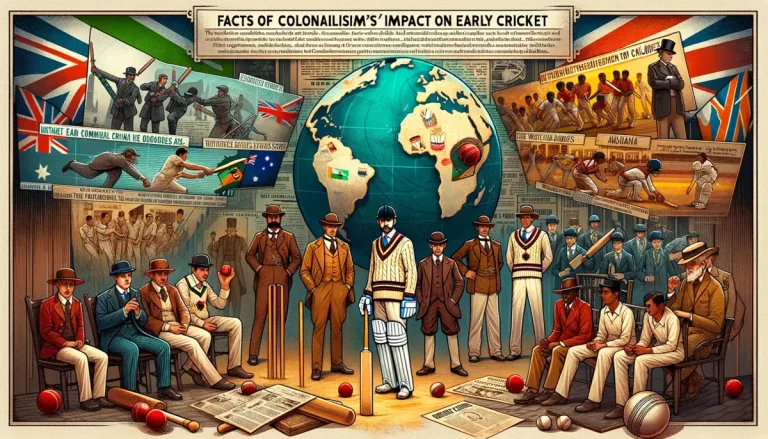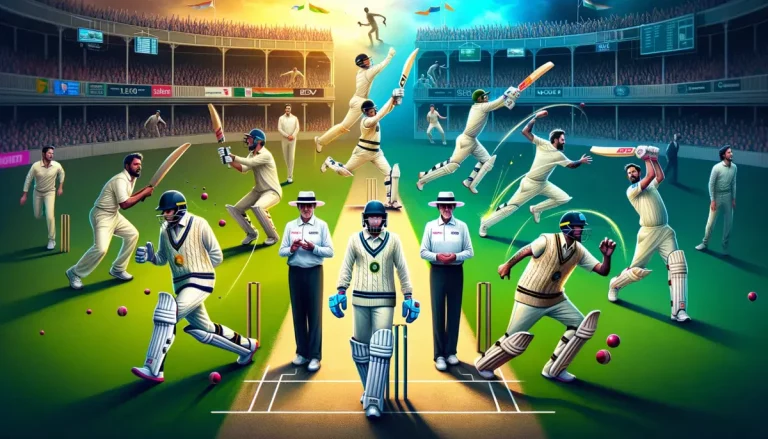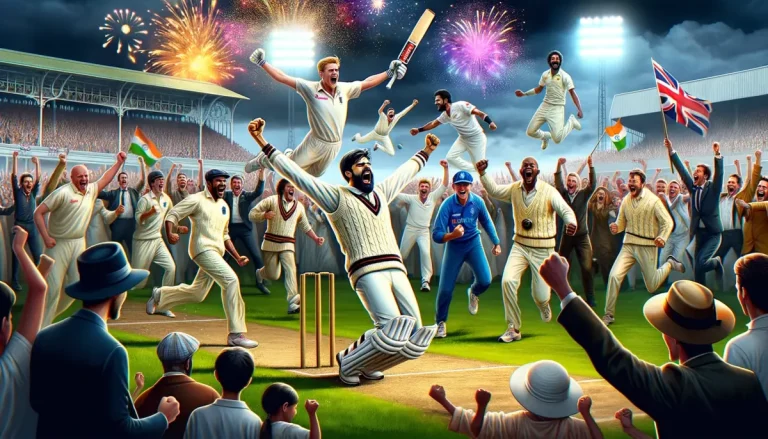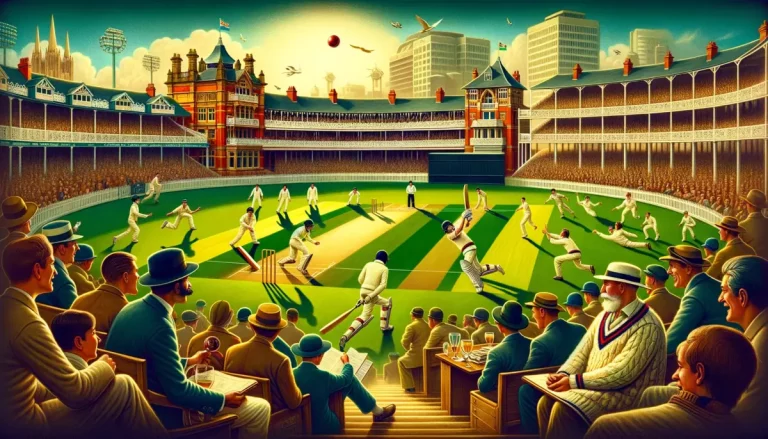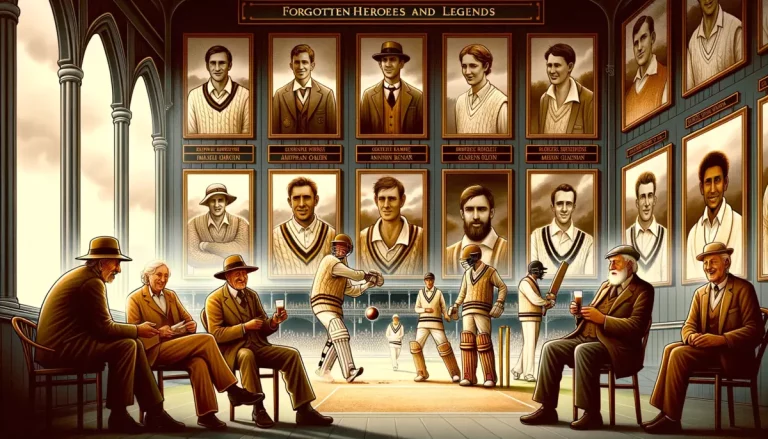Evolution of Cricket Rules Over the Years
Evolution of Cricket Rules Over the Years – Cricket’s rules and regulations have undergone important evolutions since the game’s early days.
Cricket was standardized in the 18th century by formalizing its basic structure and scoring system. Subsequent decades saw further refinements to areas like over length and wide balls as governing bodies sought consistency.
Get up to ₹20,000 Bonus Every Week!
Get up to ₹20,000 Bonus Every Week!
- Fastest Indian Rupees Withdrawals
- The Biggest Bonuses in India
- Available in four different Indian languages
The late 20th century introduced fundamental shifts like limited overs cricket to accelerate pacing for modern audiences.
Technology has also been increasingly incorporated to upgrade umpiring accuracy and efficiency. Most recently, new formats like T20 cricket have led to further rule innovations to enhance engagement.
Article Highlights
Hide- The origins of cricket rules can be traced back to the early 18th century, with variations existing from village to village.
- The introduction of the Laws of Cricket in 1744 provided a standardized framework for the game.
- Limited overs cricket was introduced to create a shorter and more spectator-friendly version of the game, leading to innovative shots and strategies.
- Technology, such as the Decision Review System, has improved the accuracy of decisions and added excitement to the game.
Tracing cricket’s rule changes provides insight into how the sport has adapted over time. While staying true to traditions, cricket has integrated pragmatic evolutions to maintain relevance.
Examining the motivations behind key rules transformations allows us to appreciate how cricket has retained integrity while moving forward.
Origins of Cricket Rules
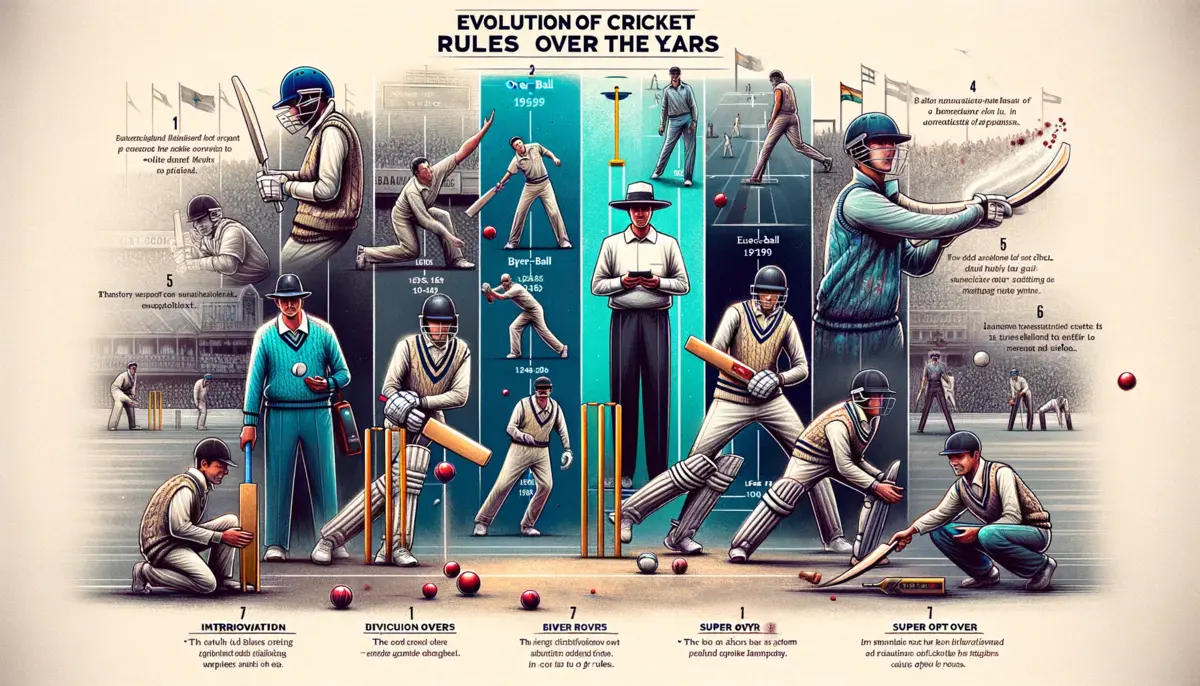
The origins of the cricket rules can be traced back to the early 18th century when the game began to take shape and organized matches became more common.
Cricket, as we know it today, has undergone an evolutionary process that has shaped its rules and regulations.
To understand the origins of cricket rules, it is essential to consider the historical context in which the game emerged.
Cricket was initially played in rural communities in England, and the rules varied from village to village. However, as the game gained popularity and matches were organized between different communities, the need for standardized rules became evident.
5 Ways British Colonialism Shaped Cricket
5 Ways British Colonialism Shaped Cricket – Cricket’s emergence and early development ... Read More
The introduction of the Laws of Cricket in 1744 by the London Cricket Club was a significant milestone in this evolutionary process. These laws provided a common framework for playing the game and ensured fair play.
Over the years, the cricket rules continued to evolve as the game spread across different regions and countries.
Various cricket clubs and associations played a crucial role in refining and formalizing the rules. Notable developments include the introduction of overarm bowling in the 19th century and the adoption of the LBW (leg before wicket) rule in the early 20th century.
Early Changes and Standardization
After the introduction of standardized rules by the London Cricket Club in 1744, the early changes and standardization of cricket rules began to shape the game into a more uniform and organized sport.
These changes were driven by the need to establish consistent guidelines and regulations for players to follow, ultimately ensuring fair play and a level playing field. One significant aspect of the early changes was the evolution of cricket equipment.
As cricket gained popularity and spread to different parts of the world, the impact of colonial rule on cricket rules became evident.
The British Empire, in particular, played a crucial role in shaping the rules of the game in its colonies. The rules were influenced by the colonial administrators who sought to impose their own ideas and standards on the sport.
This led to modifications in various aspects of the game, including pitch dimensions, playing conditions, and equipment regulations.
To provide a clearer understanding of the evolution of cricket equipment during this period, the following table highlights some key changes:
| Aspect of Cricket Equipment | Changes |
|---|---|
| Bat | Transition from curved shape to a straight blade for better control and power. |
| Ball | Introduction of a cork center wrapped in leather for improved durability and consistency. |
| Protective Gear | Development of helmets, leg pads, gloves, and chest guards to enhance player safety. |
| Clothing | Adoption of standardized white clothing for players to improve visibility and aesthetics. |
| Stumps and Bails | Introduction of heavier and more durable materials for increased stability and longevity. |
These early changes and standardization of cricket rules laid the foundation for the modern game we see today.
They not only ensured a more consistent and fair playing environment but also paved the way for further innovations and advancements in cricket equipment.
Introduction of Limited Overs Cricket
Limited overs cricket was a significant development in the evolution of cricket rules, allowing for a more condensed and time-bound format of the game.
The evolution of limited overs format can be traced back to the 1960s, where the need for a shorter, more spectator-friendly version of the game was recognized.
The first official One Day International (ODI) match was played between Australia and England in 1971, marking the beginning of a new era in cricket.
The introduction of limited overs cricket had a profound impact on player strategies. With a limited number of overs to score runs, batsmen had to adopt a more aggressive approach, focusing on quick scoring rather than building an innings.
This led to the emergence of innovative shots and strategies, such as the use of the powerplay, where fielding restrictions are in place to allow for more aggressive batting.
Bowlers also had to adapt their tactics to the limited overs format. They had to find ways to contain the opposition and take wickets in a shorter span of time.
This led to the development of variations in bowling, such as slower balls and yorkers, to deceive the batsmen and disrupt their scoring rhythm.
Technology and the Decision Review System
With the evolution of limited overs cricket, the introduction of technology and the Decision Review System became imperative for ensuring accurate and fair decisions in the game.
In the past, umpires were solely responsible for making all on-field decisions, which often led to human errors and controversies.
The use of technology, such as ball-tracking and ultra-edge technology, has significantly reduced the margin for error and has had a profound impact on the game.
The role of umpires has evolved from being the sole decision-makers to working in tandem with technology. The Decision Review System (DRS) allows teams to challenge the on-field decisions if they believe there has been an error.
This has added a new dimension to the game, as teams now have the opportunity to challenge decisions and potentially overturn them. The DRS has brought transparency and fairness to the game, ensuring that the correct decisions are made.
The introduction of technology and the Decision Review System has had a profound impact on the game of cricket.
It has not only improved the accuracy of decision-making but has also added an element of excitement and drama.
Players and teams now have the ability to question decisions and have them reviewed, which adds to the overall competitiveness of the sport.
In the subsequent section, we will explore recent innovations and future developments in cricket rules and technology, as the game continues to evolve and embrace advancements.
Recent Innovations and Future Developments
Continuing the evolution of cricket rules, recent innovations and future developments in the sport have further enhanced the accuracy and fairness of decision-making on the field.
These advancements have been driven by the need to keep up with the rapidly changing landscape of cricket and the demands of the modern game. Some of the key recent innovations and future developments include:
- Innovation in cricket equipment: The introduction of new and improved cricket equipment has had a significant impact on the game. Bats with larger sweet spots and lighter weights have allowed for more powerful hitting, while advancements in protective gear have improved player safety.
- Impact of T20 cricket on the game: The rise of T20 cricket has had a profound influence on the sport. This fast-paced and high-scoring format has led to the development of innovative strategies and tactics, as well as the emergence of new skills and techniques.
- Technology integration: The use of technology in cricket has revolutionized the game. Innovations such as Hawk-Eye, Snickometer, and Hot Spot have provided more accurate and reliable decision-making, particularly in determining close calls such as LBW decisions and edges.
- Rule changes: Recent rule changes have been implemented to make the game more exciting and engaging. These include the introduction of powerplays, free hits, and the use of strategic timeouts in some cricket leagues.
These recent innovations and future developments highlight the ongoing efforts to improve the game of cricket and ensure that it remains relevant and appealing to players and spectators alike.
Final Thoughts
In conclusion, the evolution of cricket rules has been a dynamic process shaped by the need for fairness, efficiency, and keeping up with the changing times.
200% Spribe Aviator Welcome Bonus
200% Spribe Aviator Welcome Bonus
- UPI, Paytm, gPay & PhonePe withdrawals
- Fast deposits with UPI
- Available in four different Indian languages
From its origins as a rudimentary game to the introduction of limited overs cricket and the implementation of technology like the Decision Review System, cricket rules have continuously adapted to enhance the accuracy and integrity of the sport.
With ongoing innovations and future developments, cricket rules will continue to evolve in order to meet the demands of modern cricket.


